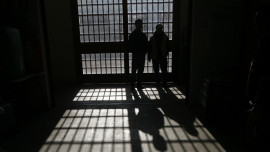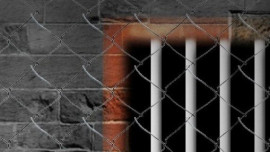
“Almost everyday some patients have to be laid down for CPR,” a PIC doctor told The Express Tribune.
“I was once doing CPR on the ground when [Pakistan Muslim League-Quaid) Chaudhry Shujaat Hussain arrived there,” said the doctor who did not want to be named. Later, PML-Q leader Moonis Elahi tweeted about the shortage of beds at the hospital, he said.
He said of the 28 beds at the department, 18 were in proper shape. The remaining 10 ‘beds’ are actually stretchers, he said.
The approved strength of the department is 14 beds. Nearly 1,200 patients are brought to the department daily.
“Around 100 patients are of acute heart attack. Ideally, they should be admitted to the hospital for five to seven days. But, doing so means we cannot take more patients,” a consultant at the PIC said.
He said some patients had been given appointment for angiography for February. Some of those who needed to be operated on had been asked to visit the hospital in 20 months, he said.
“There are 5,000 requests pending for angiography. There is an acute shortage of resources.” He said a project to construct a new 100-bed emergency department was approved 20 months ago.
PIC Board of Management member and MPA Ayesha Ghaus Pasha said the groundbreaking of the 100-bed emergency department had taken place and that it was likely to become functional this year.
“The number of patients is very high. But we are taking measures to improve the situation,” she said.
She said the government was working on linking six cardiac units. Patients would then be taken from one unit to another, if there was need.
Published in The Express Tribune, January 18th, 2015.
COMMENTS (1)
Comments are moderated and generally will be posted if they are on-topic and not abusive.
For more information, please see our Comments FAQ
-(1)1717678110-0/Kendrick-(1)-(1)1717678110-0-405x300.webp)
















Thanks to Allah that somebody has bothered to take a notice of the gruesome conditions at Punjab Institute of Cardiology, Lahore. It is really painful to see that while all the people in the city must be sleeping comfortably in their beds in the night, a patient who deserves a bed the most is standing all night to get one in order to be treated upon. This hospital is said to was build by Governer Jillani in the eighties after he suffered a heart problem and needed to go to London for its cure. By then, it was adequate for the population of Lahore city and much of its surroundings. But soon its capacity became insufficient first because of the doubling, tripping of the population and secondly because of the increasing diagnosis of heart diseases due to the widespread availability of ECG machines and also because of the increasing awareness about cardiac problems. The author has suggesred that increasing the size of the emergency would be solution to the problem. But I strongly disagree with this suggestion. A large emergency would further compound the problem. The problem is due to the smaller size of the emergency ward but due to the stagnation outside the emergency. After admission to the emergency ward, patients cannot be shifted to indoor wards in time because the hospital always remains gorged and suffocated with patients. A handful of beds in emergency would be easily manageable provided that patients can be swiftly shifted to indoor beds. A larger emergency is a wrong suggestion. It will also become overwhelmed and then it would be an even more annoying and unmanageable place. Attention should be given to the provision of beds (in fact New wards) in the hospital. A cardiac emergency patient is usually easily managed in a half hour to one hour time. And the emergency can be kept always be kept spacious provided that its patients can soon be transferred to downstream wards. Rather I would say that the ideal solution would be constructing another PIC in the city and meanwhile, upgrading and activating cardiac units in the rest of the hospital's. To suggest further on the issue, the most important thing would be interlinking cardiology and cardiac surgery resources in all the big hospital's of Lahore. A patient getting an advice to undergo coronary angiography at mayo hospital should be provided the facility at the same hospital, and he sbhould also be made bound not to go to PIC and overwhelm it. Also the various cardiac units can be made to intershare their burdens. For instance, the long cues for cardiac surgery at PIC can be manag/ed by redirecting the surplus patients to mayo and Jinnah hospitals whose cardiac surgery units are running at suboptimal capacity. Note, the author of this reply is a doctor at PIC.